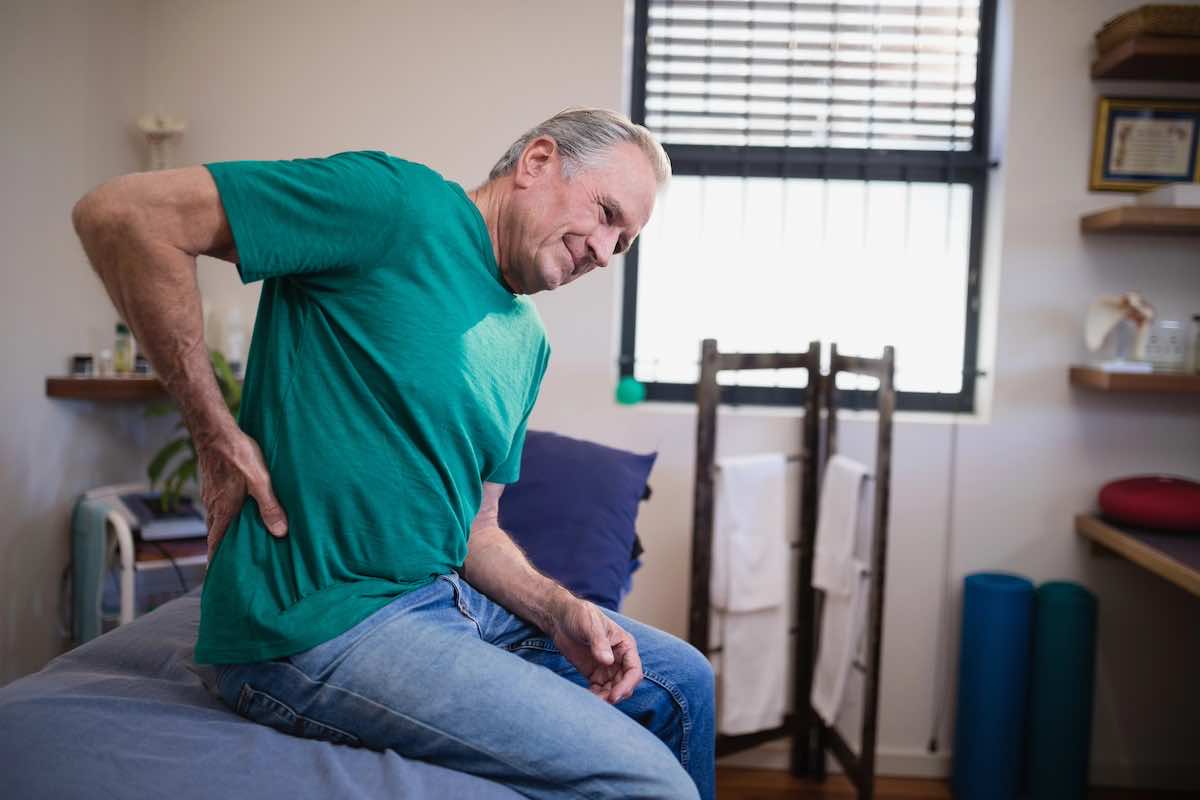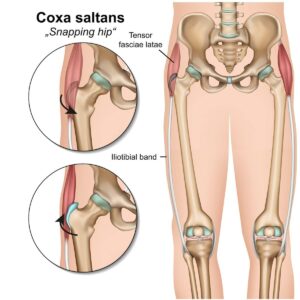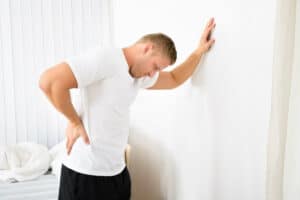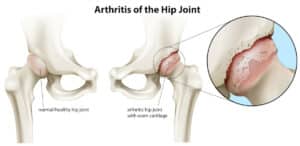Free download: Top 10 Natural & Easy Remedies for Joint Pain from Home. Learn these helpful remedies.
Estimated Reading Time: 7 minutes read
Many people wonder why their hip pain intensifies at night. Understanding the reasons behind this phenomenon can be crucial for finding effective relief and improving the quality of your sleep. This article will explore the common causes of nighttime hip pain and provide easy exercises to help alleviate this discomfort.
Nighttime hip pain can disrupt sleep and affect overall health. Factors like daily stress accumulation, fewer distractions at night, and physiological changes in your body contribute to this increased pain.
Table of Contents
Understanding the Causes of Nighttime Hip Pain
Several factors can exacerbate hip pain during the night, making it a significant concern for many. These include:
- Accumulation of stress from the day: Physical and emotional stress throughout the day can lead to muscle tension and inflammation around the hips.
- Fewer distractions: With fewer distractions to divert your attention away from the pain, it becomes more noticeable.
- Lower cortisone levels at night: Cortisone, a natural anti-inflammatory hormone, decreases at night, which may increase pain perception.
- Sleep position: Certain positions, like lying on your side, can put additional pressure on the hips, worsening the pain.
In addition to these nightly triggers, specific conditions can contribute to chronic hip pain:
- Osteoarthritis (OA): This common form of arthritis often causes pain in the hips, groin, thigh, or buttocks, especially noticeable in the morning or after prolonged sitting. While associated with aging, it can affect adults at almost any age.
- Bursitis: This condition involves inflammation of the bursae, small fluid-filled sacs that help reduce friction between body tissues. It can lead to significant hip pain and may result from overuse, rheumatic conditions, injuries, or surgeries.
- Gluteal Tendinopathy: Caused by overuse or repetitive stress, this condition damages the tendons connecting the gluteal muscles to the hip bone, causing pain.
- Hip Flexor Strain: This condition covers injuries to the muscles that elevate the leg at the hip, often due to overuse or excessive stretching.
Exercises to Relieve Nighttime Hip Pain
Incorporating specific exercises into your daily routine can strengthen and stretch the hip area, offering relief from nighttime pain. Here are some effective exercises:
A: Hip Strength Exercises
Strengthening the muscles around the hip joint can provide better support and reduce pain. Try these exercises:
1. Clamshells
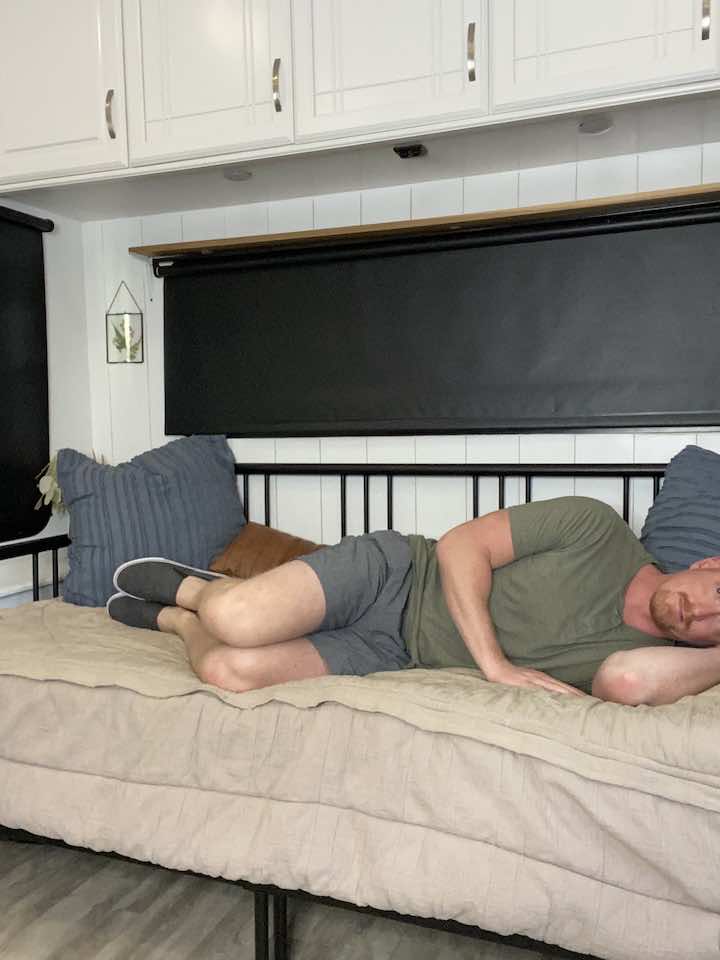
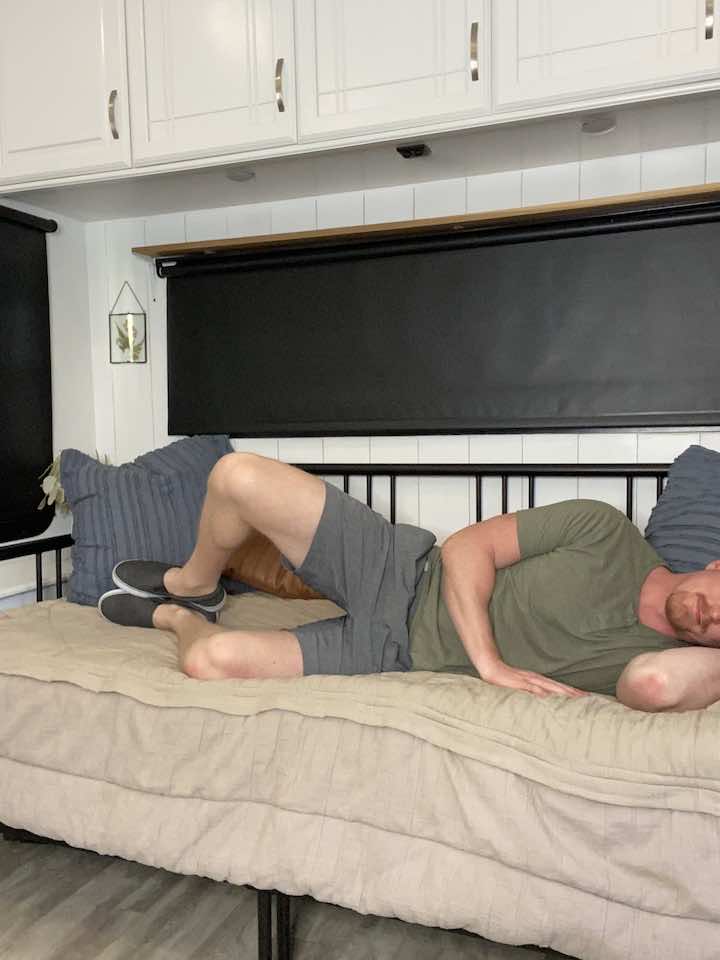
- Start by paying on your side with both knees bent.
- Keep your feet in contact with each other, and then rotate your top leg up.
- Make sure you keep your spine in alignment and your hips don’t rock back! Rule of thumb is to do a smaller range of motion if you think your back is moving.
- Rotate your top leg back down to the starting position.
- Do this 10 times for one set, and complete 3 sets.
2. Standing Hip Lifts
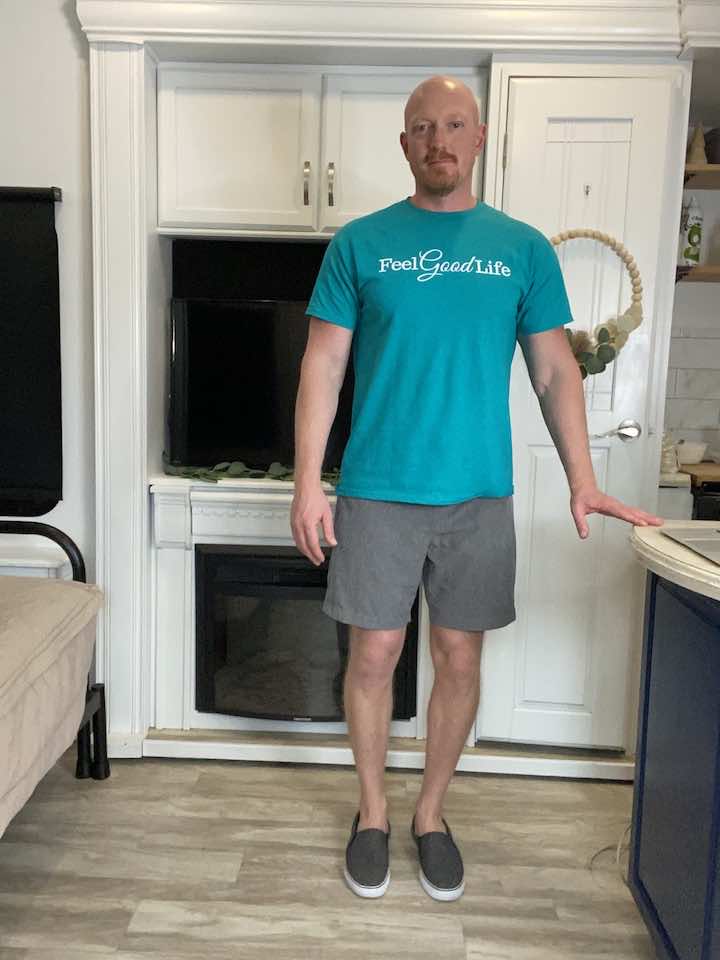
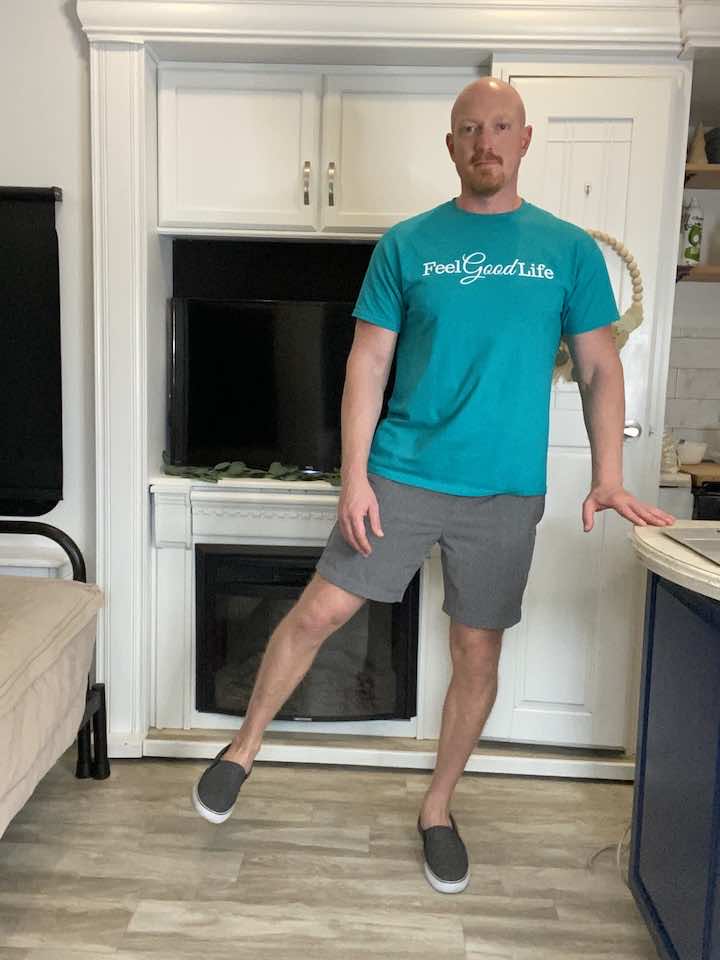
- Stand tall with one hand placed on a bed or chair. Balance on your left leg, keeping a soft bend in your knee to keep from locking out.
- Leading with your heel, lift your right leg out to the side. Be sure not to lean to the left.
- Repeat 10 times per leg.
- Complete 3 sets of the exercise.
3. Standing Hip Extension
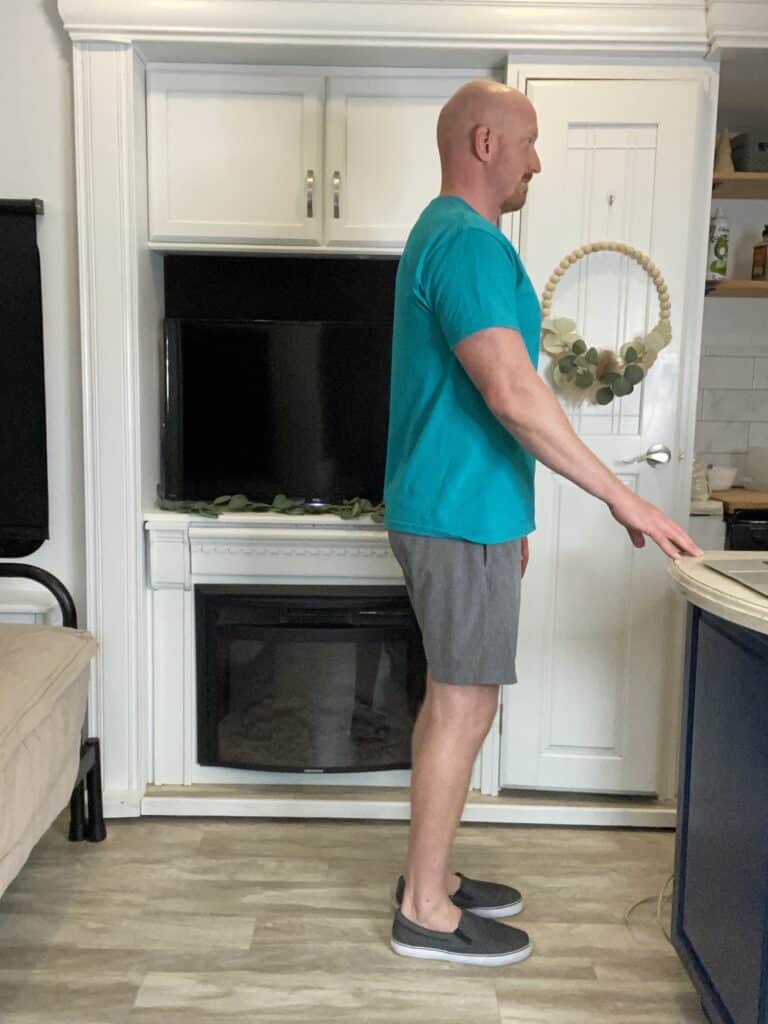
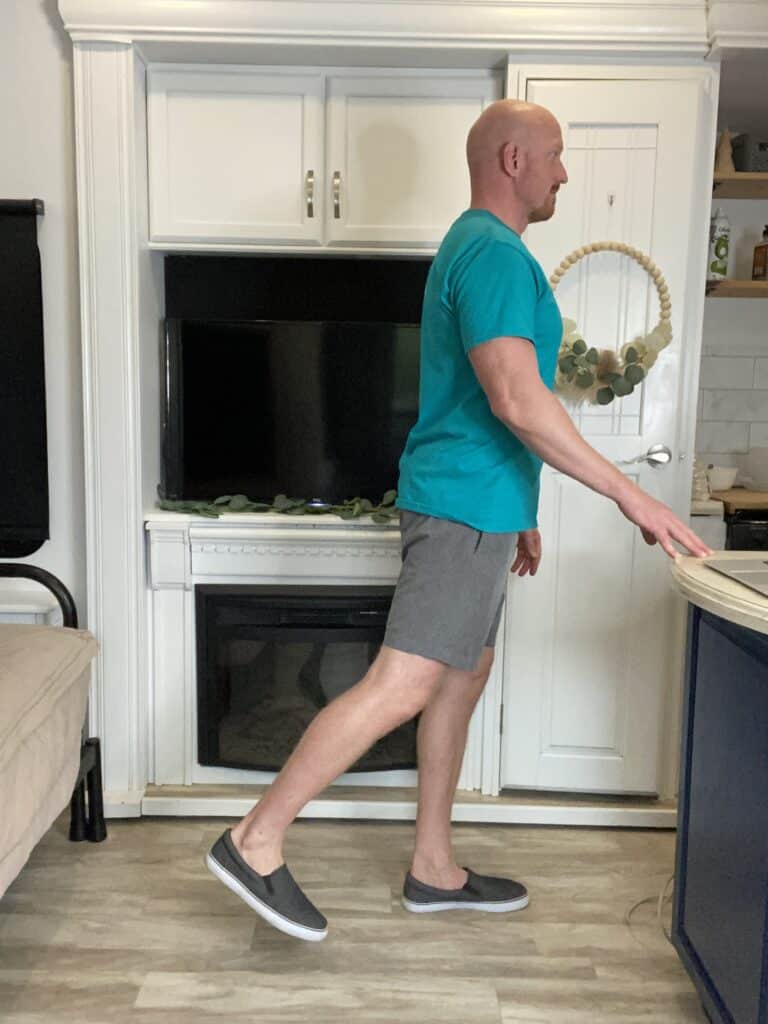
- Stand tall with your hands placed on a steady surface. You can use a counter, sink, or chair (no chairs with wheels) to hold on to for balance.
- Shift your weight onto your left leg, keeping a soft bend in your left knee to keep it from locking out.
- Then, keeping your toes pointed forward and your right leg straight, lift your right leg back a few inches, then lower back down.
- Repeat 10 times per leg for 3 sets.
4. Bridges
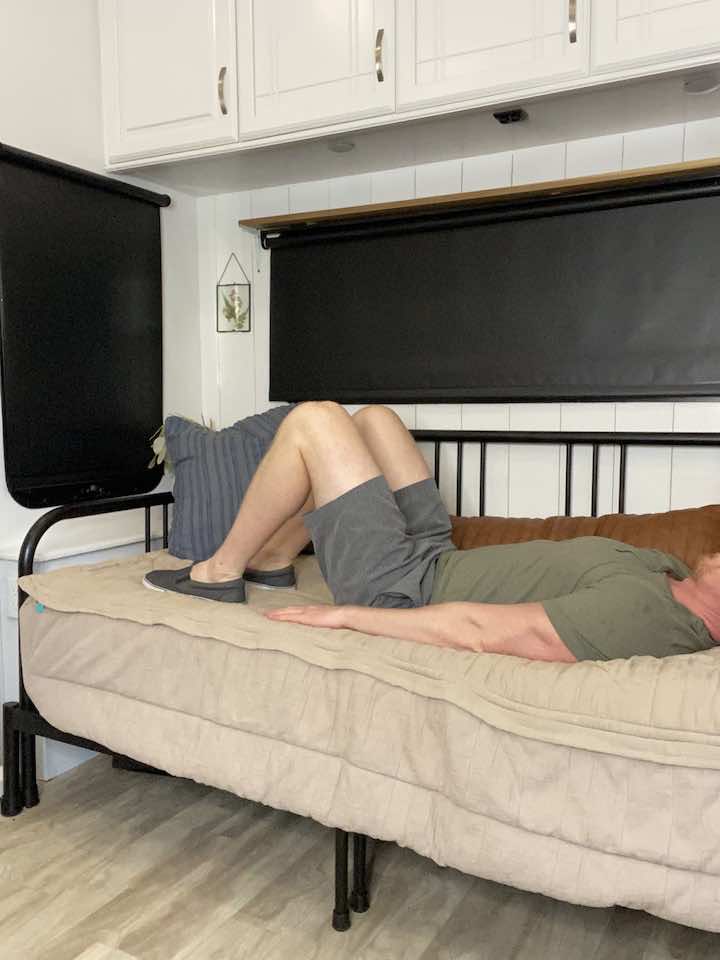
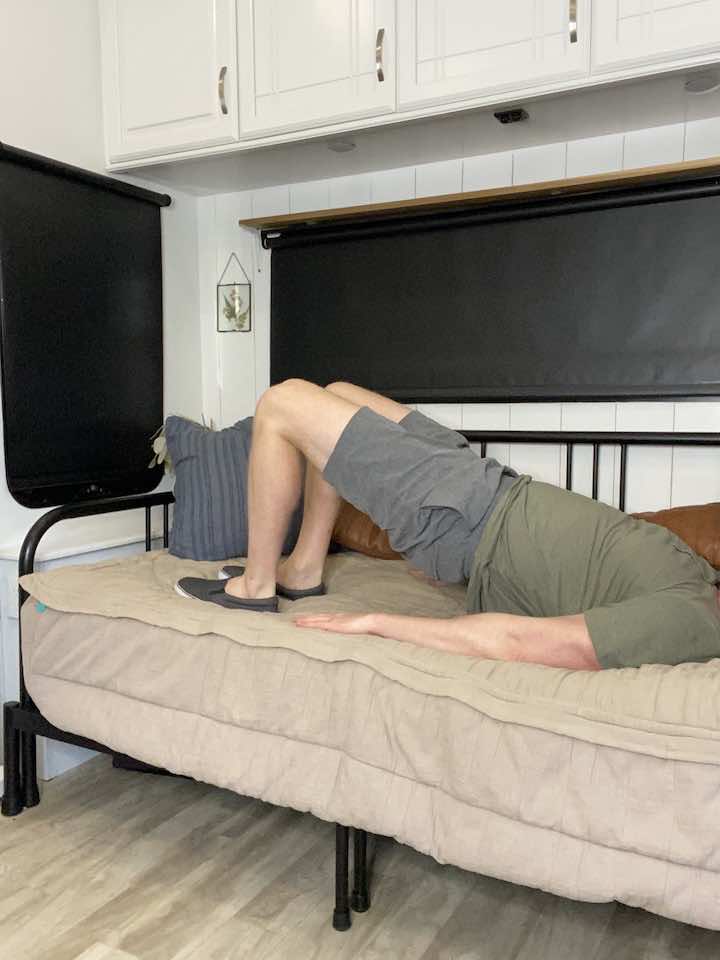
- Lie on your bed or floor (a bed is better if you have difficulty getting on the floor). Again, ensure your knees are bent at about 90 degrees and your feet are flat on the floor.
- Lift your hips off the ground, using your hands to help push your hips up if needed.
- Slowly lower your hips to the bed or floor and repeat 10 repetitions for 3 sets.
B: Stretching Exercises
Stretching helps relieve tension and improve flexibility, which can decrease discomfort at night. Incorporate these stretches into your evening routine:
1. Knee to Chest Stretch
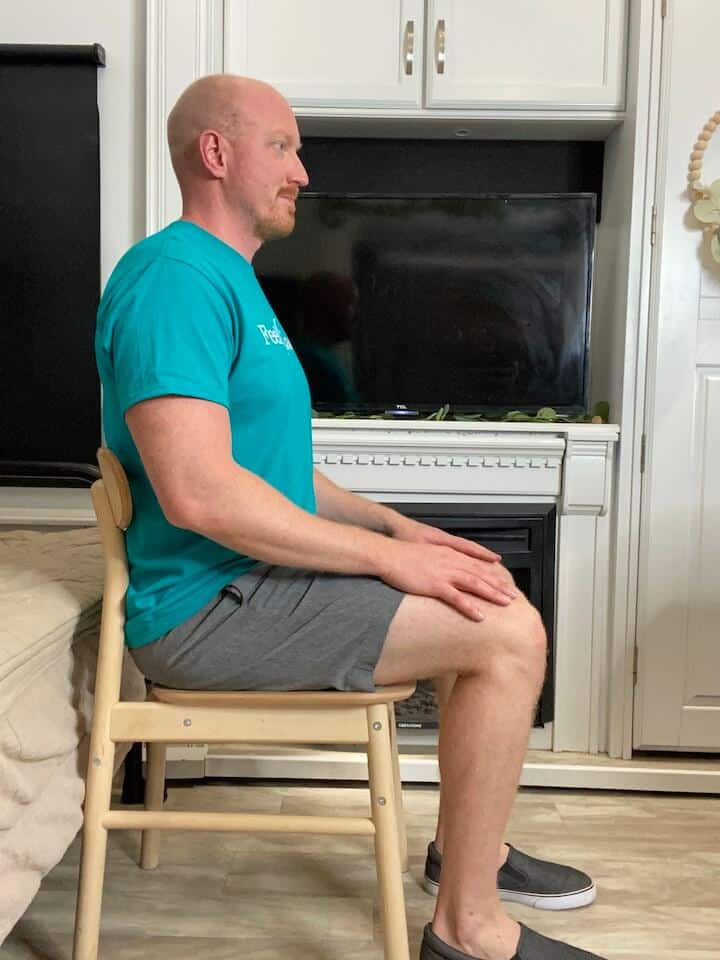
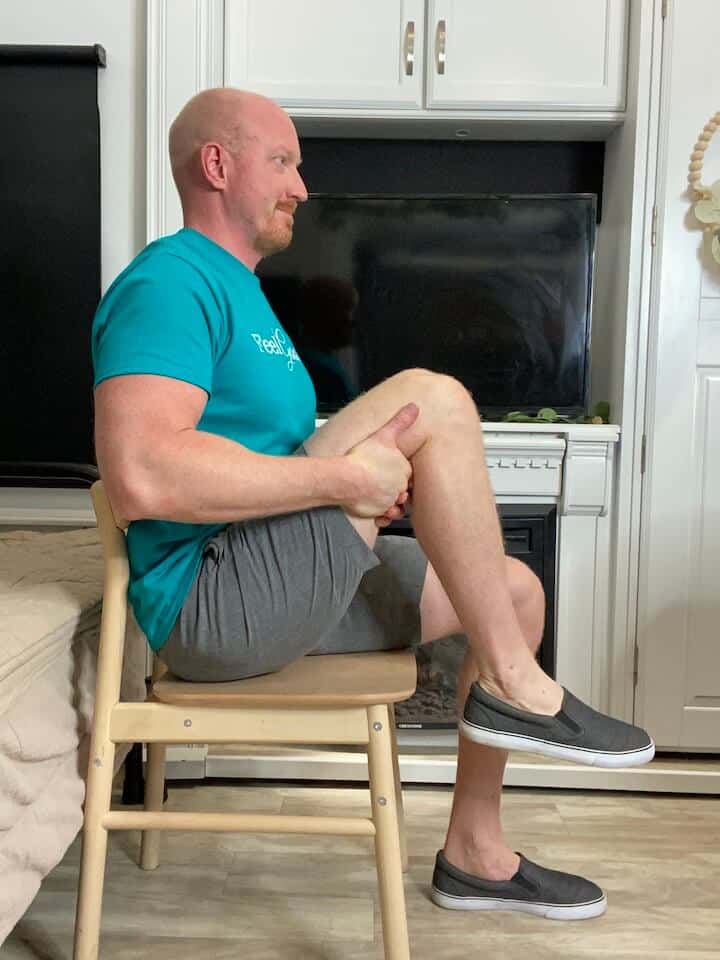
- Starting position: Laying on your back with your knees bent and feet flat on the bed. This is a nice, decompressed position for the spine to begin in.
- Reach the hands behind the thigh of one leg and slowly pull the leg so that your knee moves in towards the chest. Keep the intensity of the stretch gentle and the leg as relaxed as possible.
- Hold for at least 30 seconds.
- Repeat on the other side for a total of 3 sets.
2. Piriformis Stretch
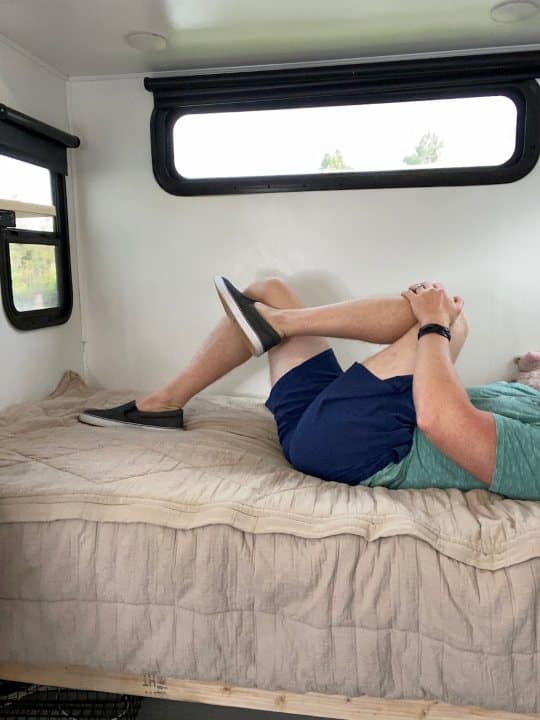
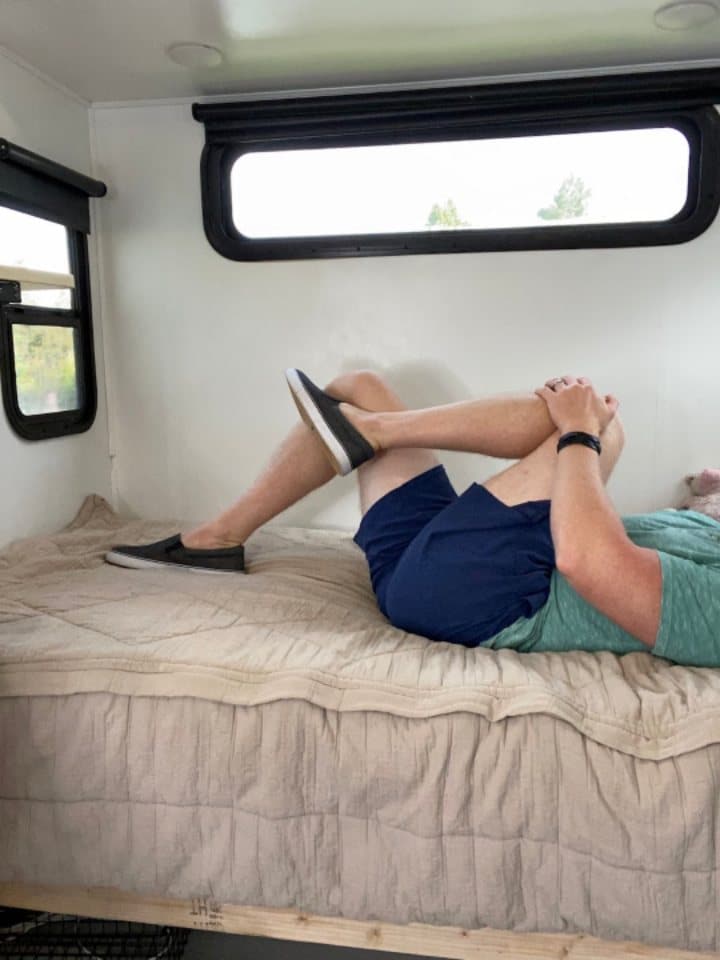
- Lay on your back on your floor, bed, or couch.
- Bend both knees so the feet are flat on the surface.
- Cross the leg to be stretched over the opposite thigh so that it’s fully resting on that leg.
- Take the opposite hand and place it on the outside of the thigh on the leg to be stretched.
- Gently pull the thigh towards the opposite hip (avoid allowing the hip and/or back to lift off the surface).
- Hold for at least 30 seconds.
- Repeat for 3 sets in total.
3. Seated Hamstring Stretch
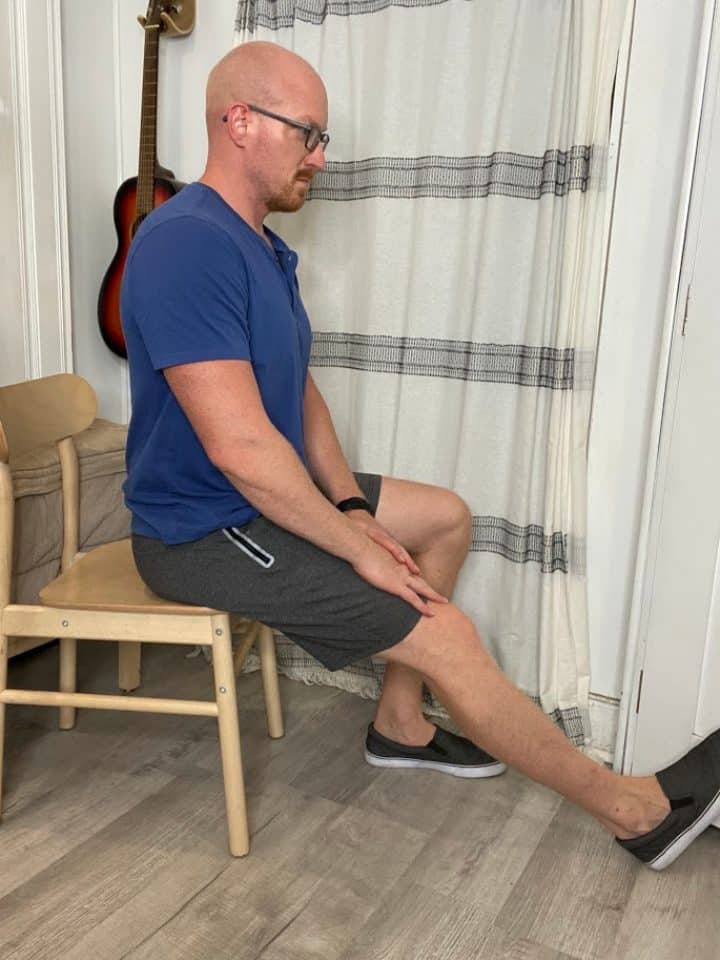
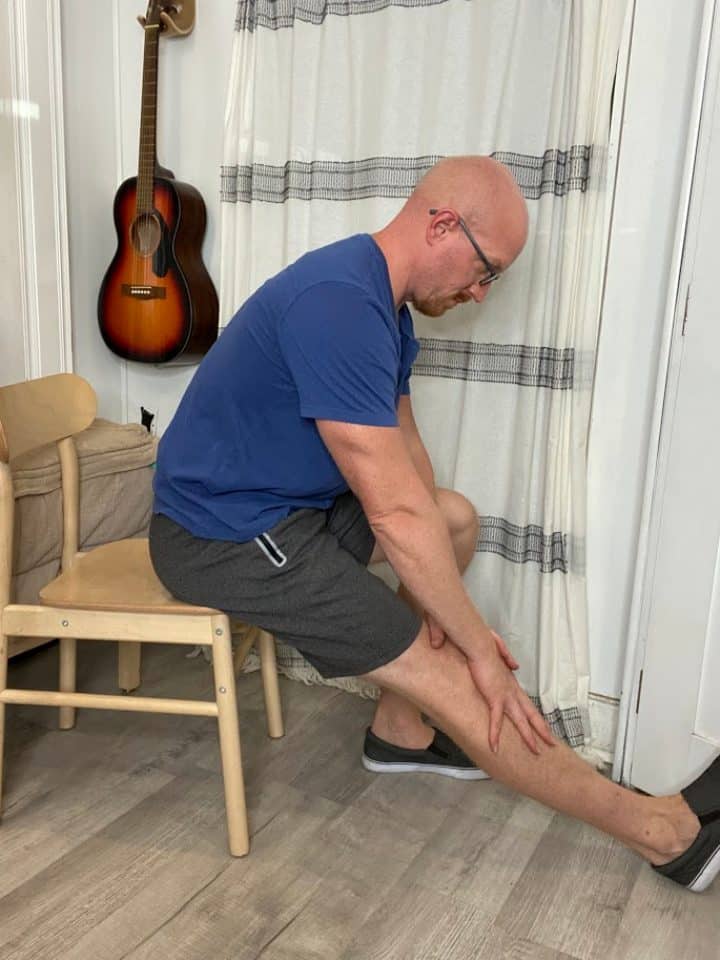
- Seated in a chair, place the leg to be stretched and extended in front of you (the knee should be straight).
- Keeping a straight back, bend forward via hinging at the hips.
- Once you feel a tolerable stretch behind the back of the leg, hold for at least 30 seconds.
- Repeat for 3 sets in total.
4. Standing Hip Flexor Stretch
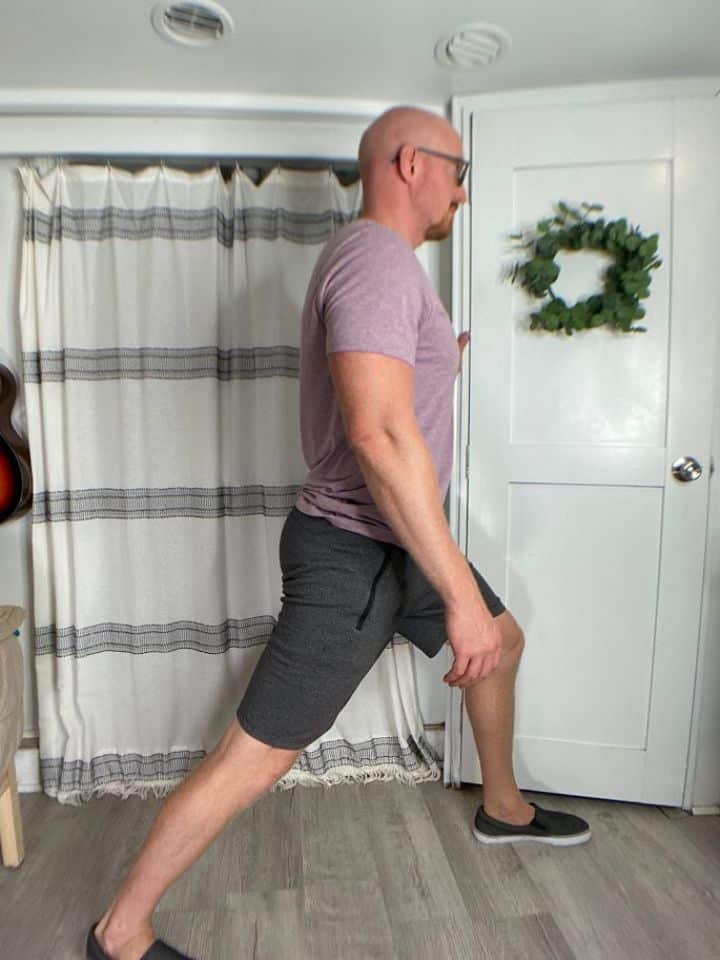
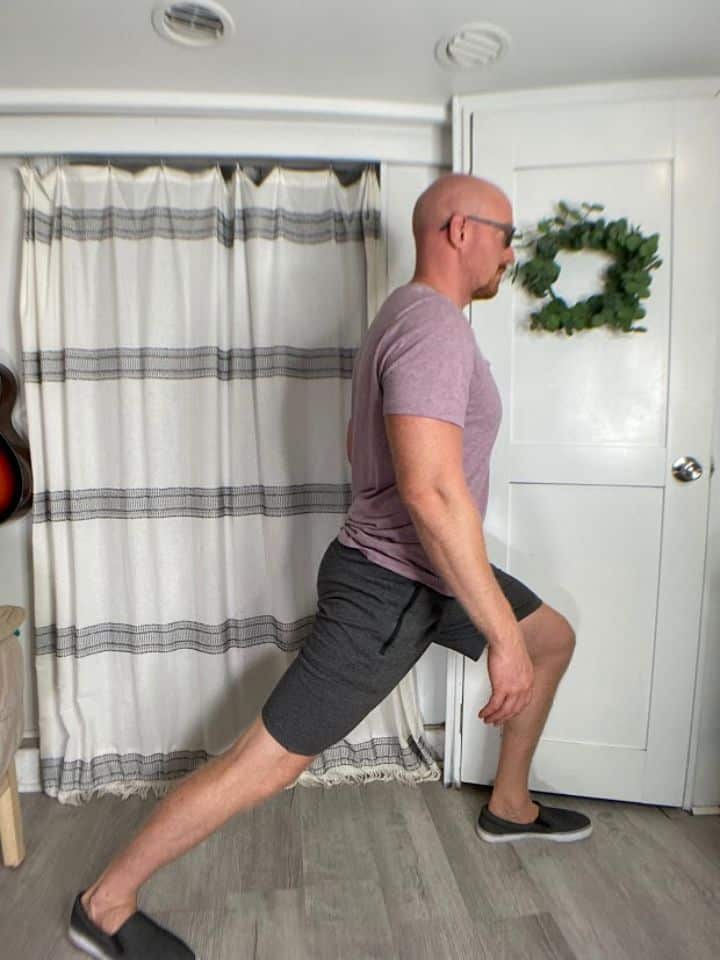
- Begin standing in front of a sturdy surface, such as the countertop, in case you need additional balance support.
- Position the unaffected leg forward and the painful leg back (the further apart the legs are, the stronger the stretch for the hip flexors).
- The front leg should have a bent knee, while the other knee in the back should be straight.
- Lean the body forward towards the front leg until a stretch is felt in the front of the hip in the back leg (make sure to keep both heels on the ground).
- Hold the stretch for at least 30 seconds.
- Repeat 3 times.
5. Standing Quad Stretch
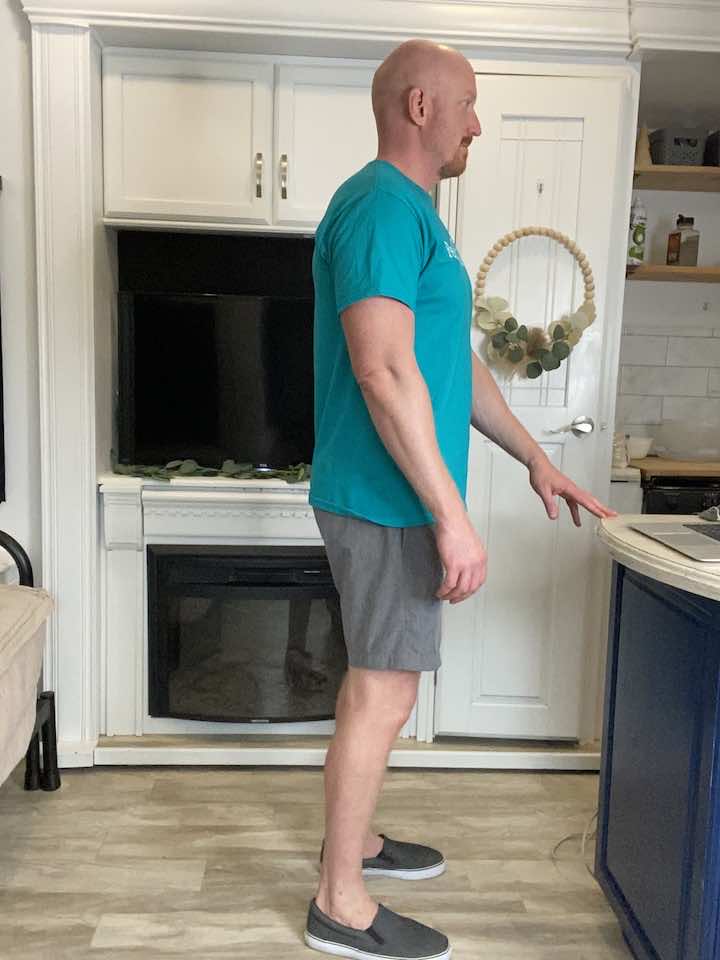
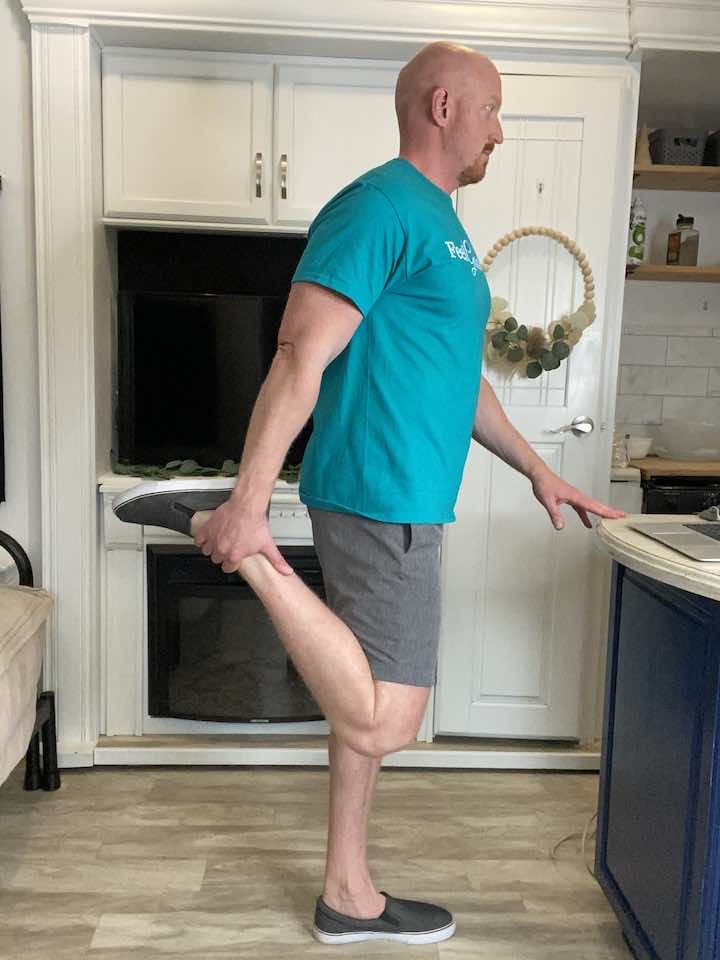
- Stand tall with your hands placed on a steady surface. You can use a counter, sink, or chair (no chairs with wheels) to hold on to for balance.
- Bend your knee and hold onto the top of your foot.
- Hold for 30 seconds, focusing on keeping your knees lined up.
- Repeat 2 more times.
- To make this exercise easier:
- You can always decrease the time you hold the stretch. The goal is to hold for 30 seconds, but you don’t have to do that on day one.
Additional Tips for Managing Nighttime Hip Pain
To further alleviate hip pain at night, consider the following tips:
- Adjust your sleep environment: Use pillows for support, and consider a mattress that offers good hip support.
- Mind relaxation techniques: Practices like meditation or gentle yoga before bed can reduce stress and muscle tension.
- Warm baths before bed: A warm bath can help relax the muscles around your hips, reducing pain and preparing you for a better night’s sleep.
Conclusion
Nighttime hip pain can be a frustrating condition, but understanding its causes and implementing targeted exercises can greatly alleviate discomfort.
By strengthening and stretching the hip muscles and making a few lifestyle adjustments, you can enhance your sleep quality and reduce the impact of hip pain on your life.
Remember, consistency is key, and it’s always a good idea to consult with a healthcare professional to tailor these suggestions to your specific needs.


